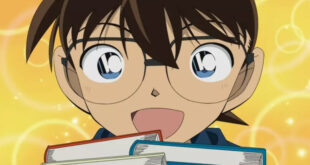When illustrating, how artists present realistic and exquisite backgrounds has always been a troubling issue. To overcome this challenge, many illustrators choose to incorporate real photographs of landscapes into their work, using techniques such as color adjustment and photo editing to blend them with illustrations. This method of creation has recently sparked intense discussions on Japanese online platforms.
Some netizens question whether using photos means that artists are avoiding the challenges of creating backgrounds they are not good at, viewing it as a “despicable” or “clever” act. Different illustrators have offered their own perspectives on this issue.
The Japanese media scholar Nakagawa Masaru, who uses the pen name “Unidentified Fish,” discussed this. He pointed out that the well-known animation director Makoto Shinkai does not hesitate to admit that he uses photographs as references when creating, such as in the movie “Weathering With You,” where he relied on a large number of images from Google Earth to recreate the urban landscape of Tokyo.
This method is not simple; it requires the creator to put in tremendous effort to process and adjust every detail.
The author also mentioned the long history of using photographs as creative materials: since the advent of photography, artists have begun to experiment with its application in painting, from Vermeer to Ingres.
As early as the dawn of photography, some painters were concerned that the new technology would replace traditional art, but in reality, many masters ultimately chose to embrace imaging technology to enhance their creative expression. Over the past hundred years, the use of photographs as auxiliary tools has already penetrated every aspect of artistic creation.
Many artists express their support for this. They believe that as long as the original photo material does not pose an infringement risk, how to showcase the advantages of the photo in illustrations is the creator’s freedom. In reality, integrating photos into painting can sometimes be more challenging than it seems.
Artist Yu No Koubi shared his perspective, stating: “Although photos are great reference tools, the overall composition and color of the picture ultimately rely on the artist’s skill for adjustments. If one wishes to rely entirely on photos for creation, there will actually be quite a few limitations.”
Uno Sōkabe further explained that using photographs as a supporting tool helps artists explore new forms of composition and color combinations, but it also sets them new challenges. How to break through the boundaries defined by photographs and create a unique visual experience without losing the original inspiration of the game is a process that balances both technique and creativity.
Uno Sōkabe shares examples of his own creations.
Reference actual photos of Uno Sōheki and the gradual adjustment of the illustration composition process.
This method of combining illustration with photography techniques, although controversial, offers artists more possibilities for creative expression. The creators’ mastery of technology, understanding of aesthetics, and spirit of innovation are the driving forces behind their continuous advancement in the digital art era.
Combining photo materials with hand-drawn illustrations is not an avoidance of creative responsibility, but an effective means to expand the boundaries of artistic expression. Understanding and making good use of these resources can instead promote diversity and innovation in art.
 Go Tokyo Your Experience
Go Tokyo Your Experience


















